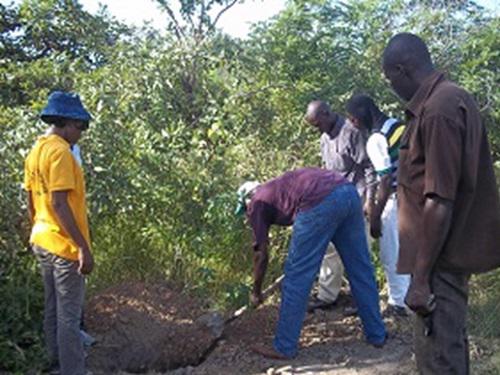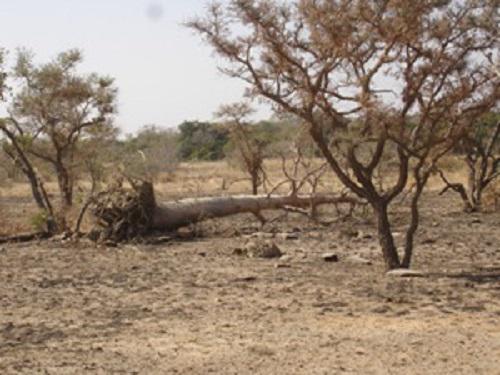Nacoulma Blandine Marie Ivette
This study aims at providing a scientifically information of the population status of baobab and the effects of elephants on this priority forest tree species, as a baseline for its in situ conservation.
Protected areas of Sub-Saharan Africa are known to the important densities of elephants as well as their emblematic baobab tree. Moreover it is known that elephant influence natural resources and impact on their quality and quantity. If negative impacts of elephant activities are not detected at an early time, they can lead to serious effects and can affect the base of livelihoods activities and natural resources sustainability.

Trees plantation.
Baobab is one of the most important tree species in the semi-arid regions of West Africa. It provides non-timber forest products used in human daily life and provides additional income to farmers. To date, baobab species is faced to recruitment problem in the agroforestry systems of Burkina Faso. In the eastern protected areas (PAs) of country, its populations have been observed to gradually decrease over the last 15 years due to elephant damages. Therefore, baobab tree loss may increase the vulnerability of local population to poverty. Thus, with little knowledge threat factors on the baobab population, it is difficult to determine appropriate sustainable management practices to secure its long-term viability.

This study aims at providing a scientifically information of the population status of baobab and the effects of elephants on this priority forest tree species, as a baseline for its in situ conservation. Specifically, it aims to (i) assess the current pattern and population structure of baobab trees in the W-Arly-Pendjari complex PAs; (ii) determine the periods, types, rates and patterns of elephant damages on baobab trees; and (iii) assess the importance of baobab in elephant diet.
To achieve these objectives, information on local population’s perception of the problem, their proposed solutions and the conservation issues of baobab in the agroforestry systems will be collected through an ethnobotanical survey. Furthermore, baobab population structure, pattern of damages, importance of baobab in elephant diet will be accessed through dendrometrical measurements, categorization of elephant damages and dung analysis. Finally, baobab trees will be planted in a participatory way.
The project will provide the WAP complex managers, the scientists and Non-Governmental Organizations and other conservation-based agencies with some key information which will help in field activities, and provide technical information for a better management of both species and other species of similar condition.